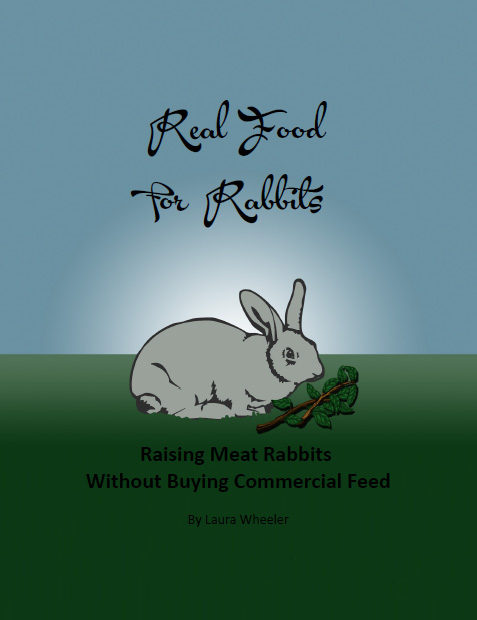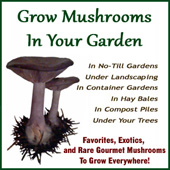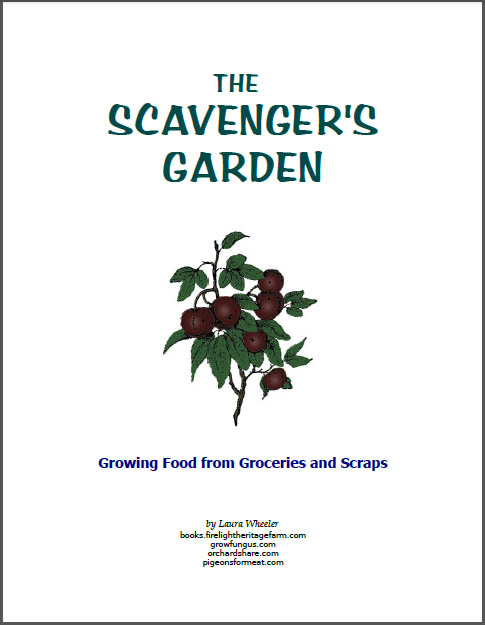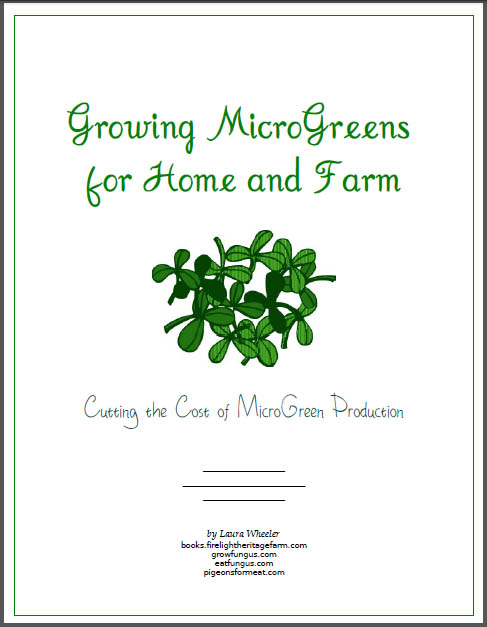 Click to Download Your Free Heritage Pickling and Culturing e-Book Now!
Click to Download Your Free Heritage Pickling and Culturing e-Book Now!
Instant Download, NO Registration Required!
The Myth of One Acre Self-Sufficient Farming
An article with a diagram of a supposed 1 acre homestead has been circulating on FaceBook lately. Turns out Mother Earth News is to blame for it, and really, they ought to know better.
The title of the article is beguiling, and the lovely artistic rendering of a square homestead with various areas neatly obeying the master's command to reproduce according to the instructions given almost persuades a person that the writer knows what they are talking about. We noticed two immediately obvious problems:
- The house is not to scale. It is much too small, occupying only a tiny little spot on the image. It is as though the person drew out the production areas, and then realized there was no house, and decided to fit it into an invisible line between two areas.
- The cow is in a grassy field. The only other sign of animal life is pigs in a pasture the same size as the one the cow resides in, and a few oversized chickens in the back yard. The cow has no barn - forget milking it if you have no shelter in which to milk in bad weather. (Ok, so there is a stall way across the way from the pasture, but it is not large enough for milking.)
There are other problems with the image as well, which would keep the entire project from meeting the potential of anything like self-sufficiency for any more than half a person. Even to be self-sufficient with a single person, or a couple, you would need to be FAR more efficient with your crops than shown in this image. I'll get to some of that in a bit.
There were two problems we immediately zeroed in on, which told us unmistakably that the person writing the article, and all the people passing it on, had never raised a cow, and didn't have anywhere near the knowledge they thought they did about small scale production. A third problem is apparent when you run the slideshow, and it gives a closeup on the chicken tractor in the back yard:
- The cow is in a grassy field. Oh, wait. We said that before. But the cow is in a GRASSY field, that is perhaps 1/10 of an acre in size. That is 110 ft by 40 ft, approximately. To be truly self-sufficient, you need at LEAST 5 acres for ONE cow, in GOOD WET grazing areas (a mini-cow takes half that). If you have that, you don't need supplemental feed (well, if you are smart and don't plant grass, but plant a good variety of grazing forage and leave the blackberries, and plant a few apple trees in there). With a cow in a small pen - because really, 1/10 acre is NOT a pasture, but a pen - she will NOT be on grass! She will be in DIRT! Even with supplemental feed (so small an enclosure would not even contribute significantly to her feed, so you'd have to feed her everything she needed), she would graze everything off and trample it down to dirt within a month or so. To make it even worse, she has a calf... and there appears to be another cow shoved into a tiny stall sort of box next to the house (no room to get in to milk it, so I kind of wonder what the purpose of that ultra-tiny stall is!). One cow would be overload. They seem to think three is reasonable! Next to the cows are pigs, in a slightly smaller pen! More than one pig! If you even THINK of putting a pig in a pen that size, it will be deep in mud or nothing but dirt with excavations - pigs require much more space to keep them with anything green, they are not an animal which nature designed to be tightly confined.
- Across from the cow pen is another 1/10 acre plot, with some kind of grain. Ok... so if you are going to raise your own grain, you are going to have to thresh and winnow the grain. There is no place to do that! If there were, this is a LOT of work, for which you need to build special equipment. The land allotted to grain is so little that it might produce about 3 bushels of grain, IF you managed to produce a crop that was worth harvesting, AND if you managed to reduce the amount of waste experienced from threshing grain on inefficient equipment. Realistically, the yields are likely to be far less. Grain crops are prone to weed infestation, and typically finicky about water, so unless you have rains in the spring and summer, but none in the fall when the crops need to dry out, your grain crops are not going to thrive well. For 1/10 of your precious land to be dedicated to a labor intensive crop which, if successful, would produce MAYBE 120 lbs of flour (worth about $25), isn't very smart land management! Grains are things you SHOULD BUY for yourself, and MINIMIZE for your animals, unless you have WAAAY more land and can dedicate several acres to production and experimentation.
- The chicken tractor really is a joke. Ok, so they said you can build a chicken tractor for "practically nothing" by using scraps and covering the coop area using grain sacks. Let's think this out, ok? Because thinking it out is something the person who drew the picture did not do! First off, any time you try to build a chicken tractor, it is going to cost you SOMETHING. Usually more than you plan! Even "inexpensive" parts add up so fast that you can expect to pay enough that it won't qualify as "practically nothing". EVER!! Next, poultry are predator magnets (this is the thing that tells us the person who had this bright idea never raised a chicken, and probably only ever saw one in pictures online). Coons, coyotes, foxes, skunks, weasels (ferrets), hawks, snakes, even loose neighborhood dogs and sometimes cats will come after chickens, ducks, geese, turkeys, guineas, etc. It is your job to keep them safe, and the first thing you want is a predator-proof coop. Even if the coop is mobile, it has to be predator proof. Grain sacks are now made of either paper with a thin plastic coating, which will degrade so fast you could not use it for anything durable, or from woven plastic, which is NOT WATERPROOF, and which shreds under stress, and which breaks down so fast in the sunlight that it would be flaking and breaking apart within a couple of months. I think it would take a significant amount of duct tape just to hold it all together so you would not have gaps and flapping pieces - and even then, any amount of wind would pull at the tape, tug at the corners, and systematically demolish the covering in a few weeks. The CHICKENS would also shred the bags. Even if they did not, a predator could easily get through them to decimate your small flock in a single pillage. If the bags had chicken wire under them, it would still not be sufficient, since most determined predators can get through chicken wire (it is only safe for daytime, not night time - snakes, weasels and other small animals will go through, and larger predators will rip the wire). This is not just a BAD IDEA for one reason. It is a bad idea all the way around.
So, can you be self-sufficient on 1 acre? Yes, and no!
A couple can achieve a great deal of self-sufficiency on 1 acre. It takes about 2 acres for a family. And if you do, you have to do it smart. You can't try to scale down what someone does on 5 acres and make it work on 1 acre.
So what are the things you have to do?
- Go for no-till, high yield gardening. Our book, The Edge of Eden explains the most intensive and lowest work method (NO double-digging, folks!). You need to get every bit of growing stuff out of every square inch of land that you can.Your gardens will fit in 1/4 acre and be more productive than the example above produced from 3/8 of an acre.
- You won't have your house and landscaping on a quarter of an acre of land. You will have your house, your orchards, your edible landscaping, and your fish pond on that quarter acre. Your shade trees will be fruit or nut trees. Your arbor will have grapes and scarlet runner beans instead of roses. Your windbreak trees will either produce edible crops, or be capable of producing poles or switches, or useful wood for use around the farm. And your landscaped beds in the front will have culinary and medicinal herbs.
- Your animals must be selected to produce in small spaces. Rabbits for meat (they take less space than chickens). Chickens for eggs. Ducks or goats for red meat, and lamb for red meat. They take less space and are more food efficient than cows. Goats for milk - they produce more on less space than cows. Even then, you are going to have to import some feed - but if you are smart about it, that half acre you have for animals can be planted with trees, and wild vines and bushes, and aggressive plants can be encouraged to provide food for your animals. Blackberries, comfrey, and other aggressive plants are a nuisance unless you have something that will eat every bit that comes up - with a goat in the pasture, they are a blessing!
- You need to ensure that EVERY animal on the farm pulls its weight. No room for slackers. A good dog, a good farm cat, are essential. But you can't afford a horse, or a wethered goat. Everything has to be productive. Pigs probably are not a realistic possibility, they are too hard on the land when confined too tightly.
- Select garden crops that grow well in your area, and produce well. Avoid things that take a lot of land and produce very little (such as corn and some kinds of winter squashes, and most grains).
- For your animals, substitute weeds with seed heads, windfall apples, sprouted grain (purchased grain goes much further this way), to feed to them instead of a diet heavy in grain or pellet feed. You just can't expect to be able to AFFORD to produce your own meat if you have to buy all the feed. It will over-extend you! So you have to be as concerned with producing as much food, easily, for your animals, as you are for you! But if you have to work too hard at THAT, then you'll burn out too! So go easy, with lots of forage, lots of garden surplus and weeds, and then hays, silage, and sprouted feeds.
If you work smart, and if you make wise choices about what to bring onto your farm, and what to cultivate, you CAN achieve a great deal of self-sufficiency on as little as an acre, even if you have a family.
But you won't do it by following that attractive but completely unrealistic little diagram!
If you REALLY want to know what can be done on 1 acre, please see this article on our sister site: Real Self-Sufficiency on 1 Acre








